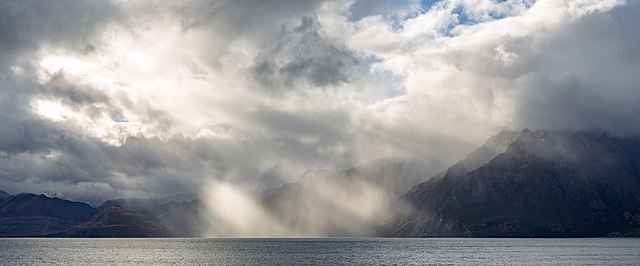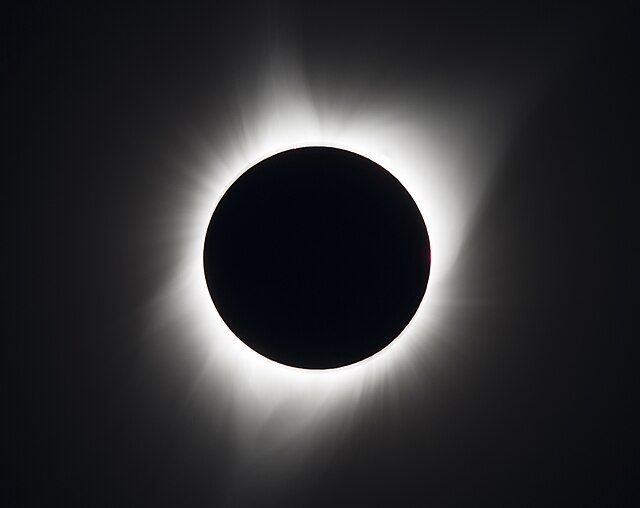Sunlight is a portion of the electromagnetic radiation given off by the Sun, in particular infrared, visible, and ultraviolet light. On Earth, sunlight is scattered and filtered through Earth's atmosphere as daylight when the Sun is above the horizon. When direct solar radiation is not blocked by clouds, it is experienced as sunshine, a combination of bright light and radiant heat (Atmospheric). When blocked by clouds or reflected off other objects, sunlight is diffused. Sources estimate a global average of between 164 watts to 340 watts per square meter over a 24-hour day; this figure is estimated by NASA to be about a quarter of Earth's average total solar irradiance.
The Sun, as seen from low Earth orbit overlooking the International Space Station. This sunlight is not filtered by the lower atmosphere, which blocks much of the solar spectrum.
Sunlight shining upon two different sides of the U.S. state of New Jersey. Sunrise on the Jersey Shore at Spring Lake, Monmouth County (above), and sunset on the Shore at Sunset Beach, Cape May County (below). Both are filtered through high stratus clouds.
Sunrise over the Gulf of Mexico and Florida. Taken on 20 October 1968 from Apollo 7.
Sunlight shining through clouds, giving rise to crepuscular rays
The Sun is the star at the center of the Solar System. It is a massive, hot ball of plasma, inflated and heated by energy produced by nuclear fusion reactions in its core. Part of this energy is emitted from its surface as visible light, ultraviolet, and infrared radiation, providing most of the energy for life on Earth. The Sun has been an object of veneration in many cultures. It has been a central subject for astronomical research since antiquity.
The Sun, filmed through a clear solar filter
High-resolution image of the Sun's surface taken by the Daniel K. Inouye Solar Telescope (DKIST)
The Sun's transition region taken by Hinode's Solar Optical Telescope
During a solar eclipse the solar corona can be seen with the naked eye during totality.








